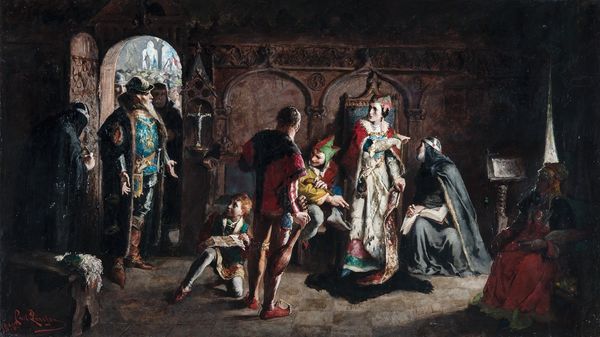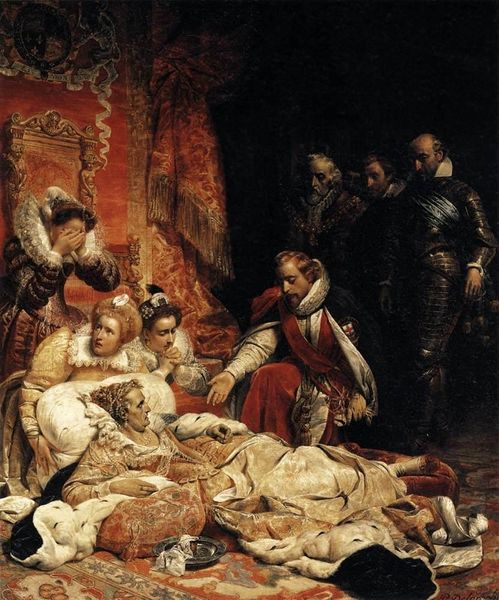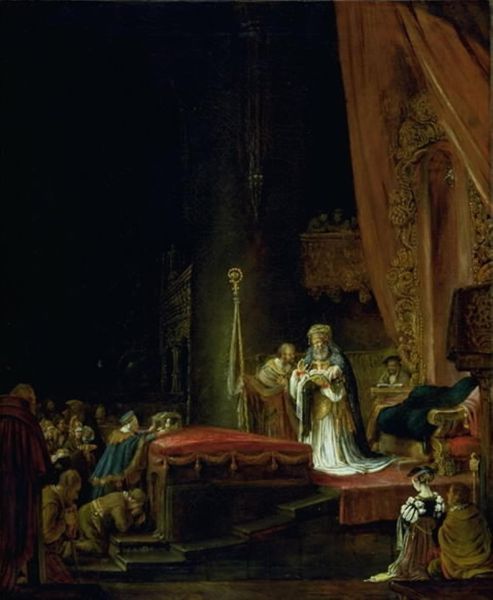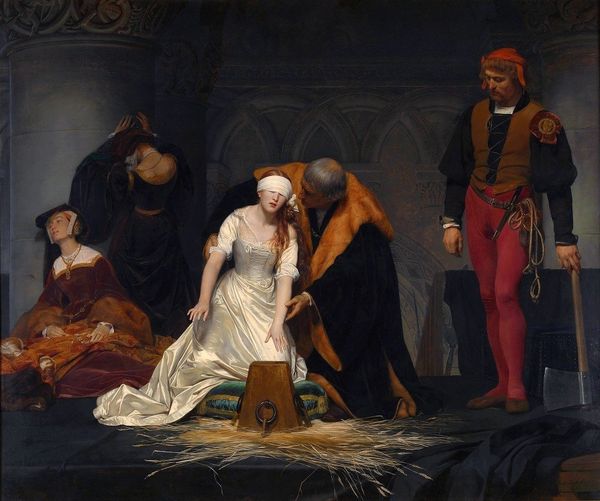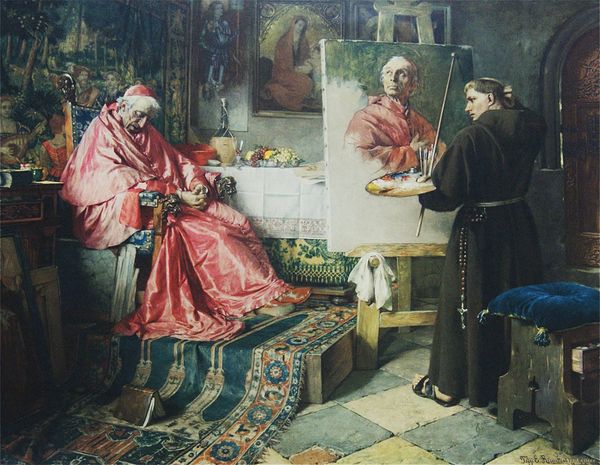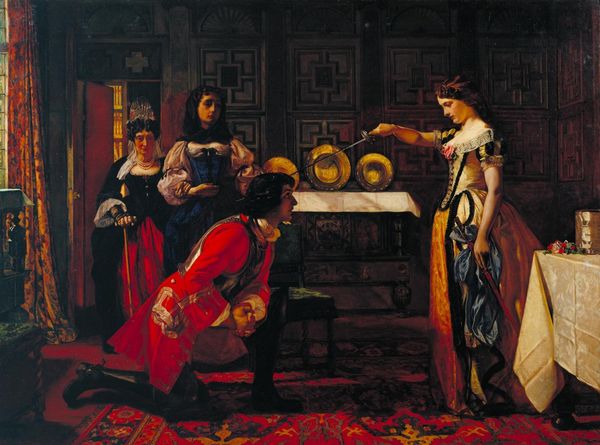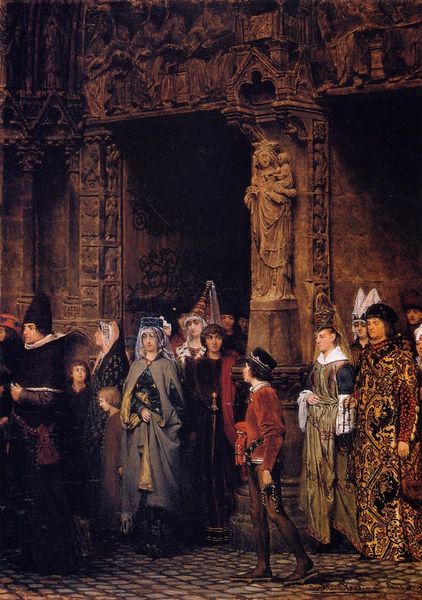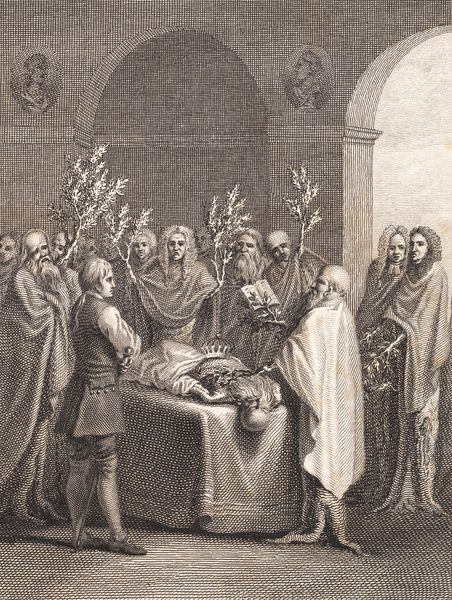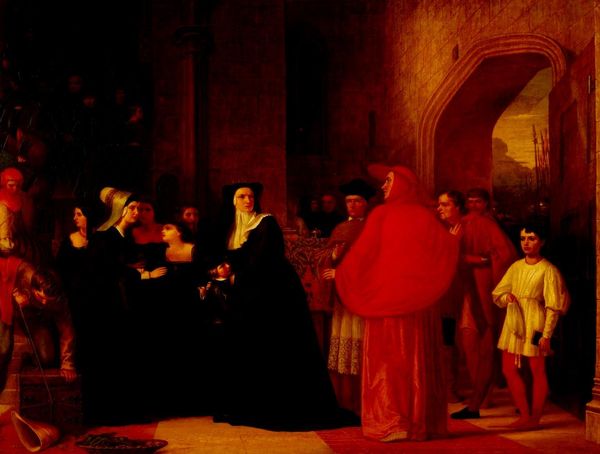
Copyright: Public Domain: Artvee
Editor: Albert Edelfelt’s “Duke Karl Insulting The Corpse Of Klaus Fleming,” painted in 1878, is quite striking. The scene is dark, with a strong sense of theatrical drama in the figures' expressions and staging. The Duke’s brightly lit attire sharply contrasts with the somber, almost monochromatic figures in the background. What do you see in this piece, focusing on how Edelfelt crafts its visual narrative? Curator: Indeed, let's examine how Edelfelt structures meaning through form. Consider the spatial organization: The Duke dominates the foreground, positioned above the corpse, which itself rests on a highly decorated coffin, literally and figuratively elevating him. Notice how the light emphasizes the texture and detail of his armor and fur, conveying power and arrogance. Conversely, the mourners are cloaked in shadow, their forms simplified and lacking detail. It's a carefully orchestrated hierarchy. How does the palette reinforce this dichotomy? Editor: I see what you mean. The muted tones of the mourners and the background certainly make the Duke’s attire—and his stance—all the more powerful and repugnant. Is there a semiotic reading here, maybe the gold and the light around the duke acting as signifiers of wealth, in stark contrast with the 'death' and 'grief' that dominate the left/background? Curator: Precisely. The Duke’s opulence is a visual signifier of his authority and a symbolic contrast to the desolation represented by the corpse and its mourners. The painting is not merely a historical record but a deliberate arrangement of forms designed to evoke a strong emotional response, mediated by aesthetic structure and composition. What is your final interpretation of Edelfelt’s manipulation of form to convey meaning in this rather emotive scene? Editor: I now perceive how Edelfelt uses compositional techniques and symbolism in a highly effective and persuasive manner to express power and dominance. A successful lesson in understanding the artist's formal choices in conveying their narrative. Curator: Indeed. A clear demonstration of how a close formal reading reveals so much meaning beyond just the historical subject matter.
Comments
No comments
Be the first to comment and join the conversation on the ultimate creative platform.
